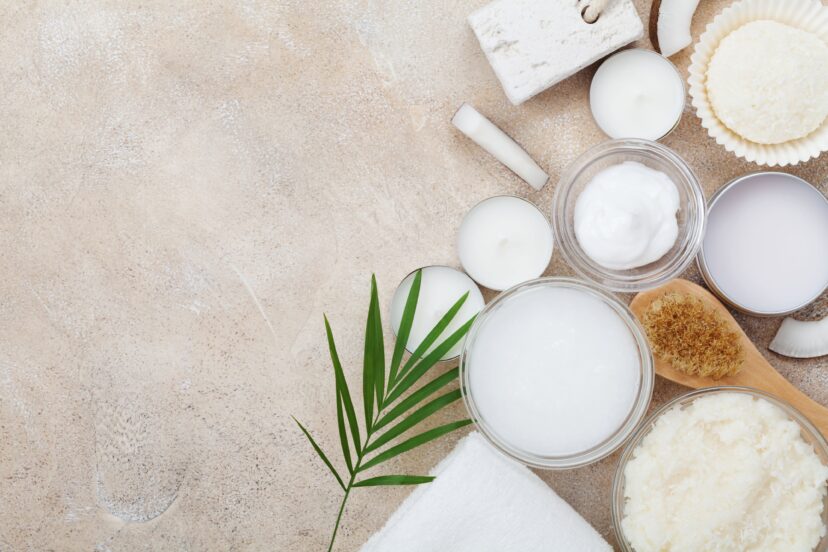How to Shave Without Shaving Cream: Expert Tips for Smooth Skin
Post Disclaimer
*We may earn a commission for purchases made using our links. Please see our disclosure to learn more.
Shaving is a daily routine for many, but what happens when you run out of shaving cream? It’s a common snag that can throw off your whole grooming game. Are you wondering on how to shave without shaving cream? Fear not! There are ways to get a smooth shave without the traditional foam or gel. Did you know that with just a few household items, you can still achieve that fresh, clean-shaven look?.
This article will be your guide through the process of shaving without regular shaving cream. We’ll explore safe alternatives like conditioner and coconut oil and give you expert tips on avoiding razor burns and cuts.
Plus, we’ll show you how to care for your skin after the shave for lasting smoothness. Get ready to discover how easy it is to keep your skin soft and sleek – even in a pinch!
Risks and Side Effects of Shaving Without Shaving Cream
Shaving without shaving cream can lead to nicks and cuts, razor burn, and razor bumps due to lack of lubrication. It is important to explore alternative options and take proper precautions when shaving without traditional shaving cream or gel.
Nicks and Cuts
Shaving without proper lubrication can lead to nicks and cuts. These little injuries happen when the razor blade catches and slices the skin instead of gliding smoothly over it. Hot water helps in softening your hair and opening up follicles, but without shaving cream or gel, you’re missing a protective layer.
This increases friction and the chances of your skin getting nicked.
To minimize this risk, ensure your razor is sharp and don’t press too hard against the skin. Always shave with the grain rather than against it; going against can pull hairs taut leading to more chances of cutting yourself.
Should you experience a cut, clean it immediately to prevent infection.
Using alternatives like conditioner or moisturizer can help provide some slip for the razor’s edge if you’re caught without shaving foam or gel. Conditioner coats the hair and makes them easier to cut while reducing drag on your skin which lessens nicks’ risks substantially—just one reason why keeping an eye out for household items like body lotion could save your skin in a pinch.
Remembering these tips will help keep those frustrating nicks at bay while ensuring that even an improvised shave leaves you looking smooth rather than scratched up.
Razor Burn
Razor burn occurs when the skin becomes irritated after shaving. This can lead to redness, discomfort, and a burning sensation on the skin. Shaving without proper lubrication or using a dull blade can increase the likelihood of developing razor burn.
Factors such as sensitive skin and shaving against the grain of the hair can also contribute to this unpleasant condition.
To prevent razor burn, it is essential to prepare your skin before shaving by using warm water to soften the hair and open up pores. Then, choose a suitable alternative to shaving cream like conditioner, coconut oil, or aloe vera gel for smooth gliding while shaving.
Additionally, ensure that you use light pressure when gliding the razor over your skin and always shave in the direction of hair growth to minimize irritation.
Razor Bumps
Razor bumps occur when the hair curls back and grows into the skin after shaving. This can lead to red, irritated bumps on the skin’s surface, causing discomfort and an uneven appearance.
To prevent razor bumps, it is essential to shave in the direction of hair growth and use a moisturizing alternative like aloe vera gel or coconut oil instead of shaving cream. Additionally, exfoliating before shaving can help remove dead skin cells and reduce the likelihood of ingrown hairs that contribute to razor bumps.
Consider using warm water to soften the hair follicles before shaving and opt for gentle, smooth strokes with a sharp razor to minimize irritation. After shaving, apply a soothing moisturizer to keep the skin hydrated and calm any potential inflammation caused by shaving without traditional cream or gel.
Alternatives to Shaving Cream or Gel
If you don’t have shaving cream or gel on hand, there are a few alternatives you can use to lubricate your skin for a smooth shave. From conditioner and coconut oil to body lotion and aloe vera gel, there are plenty of options to choose from.
Each alternative has its own benefits and drawbacks, so it’s important to find the best option for your skin type.
Conditioner
Hair conditioner can serve as an effective alternative to shaving cream. Its thick consistency helps create a smooth surface for the razor to glide over, reducing the risk of nicks and cuts.
By applying hair conditioner to wet skin before shaving, it moisturizes and softens the hairs, making them easier to cut and resulting in a smoother shave.
Using conditioner also helps protect the skin from irritation and dryness that may occur when shaving without proper lubrication. Additionally, conditioner can be found in most households, making it a convenient and cost-effective option for those who do not have access to shaving cream or gel.
Coconut Oil
Coconut oil can serve as a great alternative to shaving cream due to its moisturizing and antibacterial properties. Its smooth consistency allows the razor to glide easily over the skin, reducing the risk of nicks and cuts.
Warm up coconut oil in your hands before applying it to the skin, creating a thin layer that will provide lubrication during shaving.
To use coconut oil for shaving, apply it directly onto damp skin or after using warm water to open up the pores. The oil will help soften hair, making it easier for the razor blade to cut through smoothly.
Additionally, coconut oil soothes and nourishes the skin while providing a pleasant tropical scent.
Body Lotion
Body lotion can serve as an effective alternative to shaving cream. It provides a smooth, moisturizing base for the razor to glide over, reducing the risk of nicks and cuts. When applied before shaving, body lotion helps soften the hair and moisturize the skin, leading to a more comfortable shave.
Additionally, using body lotion after shaving helps keep the skin hydrated and smooth.
When choosing a body lotion for shaving, look for one that is fragrance-free and suitable for sensitive skin. This will help minimize any potential irritation or discomfort during and after shaving.
Alternatively, you can opt for a specifically formulated pre-shave or post-shave lotion designed to provide hydration while also helping with the overall grooming process.
Aloe Vera Gel
Aloe vera gel is a natural alternative to shaving cream that can provide a soothing and moisturizing effect. Its cooling properties can help reduce irritation and redness, while creating a smooth surface for the razor to glide across.
Aloe vera also has antibacterial and anti-inflammatory benefits that can help prevent nicks and cuts, making it an excellent choice for those with sensitive skin.
Applying a thin layer of aloe vera gel before shaving can enhance the lubrication between the razor and your skin, resulting in a comfortable shave with reduced risk of razor burn or bumps.
Additionally, its hydrating properties leave the skin feeling soft and refreshed after shaving. Incorporating aloe vera gel into your shaving routine not only supports smooth skin but also helps maintain overall skin health.
How to Shave Without Shaving Cream
Preparing the skin is essential before shaving without cream. Choosing a suitable lubricant and mastering the proper shaving technique is key to achieving smooth, irritation-free skin.
Preparing the Skin
To prepare the skin for a shave without shaving cream, start by wetting the area with warm water. This helps soften the hair and open up the pores, making it easier for the razor to glide smoothly.
Consider exfoliating beforehand to remove any dead skin cells and lift up stubborn hairs.
After wetting and exfoliating, pat the skin dry before applying a lubricant such as conditioner, coconut oil, or aloe vera gel. These alternatives help hydrate and protect the skin while providing a smooth surface for shaving.
As you prep your skin for shaving without cream, remember that proper preparation is key to achieving a comfortable and effective shave.
Choosing a Lubricant
Warm water can help prepare the skin for a smooth shave, and classic exfoliation can also help achieve a close shave. Aloe vera can be used as an alternative to shaving cream, creating a smooth consistency for the razor to glide on the skin effortlessly.
Additionally, hair conditioner or moisturizer provides adequate lubrication for comfortable shaving without irritation. When choosing a lubricant, it is essential to consider products like coconut oil or body lotion which offer added hydration and protection while ensuring a close and gentle shave.
Remember that pre-trimming may be necessary if you have not shaved recently. It’s important to dry the skin before applying any chosen lubricant to avoid diluting its effectiveness.
Shaving Technique
After choosing a suitable lubricant, it’s essential to focus on the shaving technique for a smooth and irritation-free shave. Before shaving, ensure the skin is wet and warm to soften the hair follicles.
Apply gentle pressure while gliding the razor in the direction of hair growth to avoid nicks and cuts. For those with sensitive skin, consider an adjustable safety razor with multiple blades.
Once finished, rinse off any remaining product before patting the skin dry and applying a soothing moisturizer or aftershave balm. This helps in preventing post-shave irritation and keeps the skin hydrated, ensuring a comfortable experience after shaving.
Post-Shave Care
After shaving, it is important to apply a moisturizer or aftershave balm to soothe and hydrate the skin. Aloe vera gel can also be used as a natural alternative to help calm any irritation or redness caused by shaving.
This step helps maintain smooth and healthy skin, preventing dryness and discomfort.
Moisturizing after shaving helps keep the skin hydrated and supple, reducing the chances of razor burn or ingrown hairs. Look for moisturizers with soothing ingredients like chamomile or tea tree oil to further calm the skin.
Conclusion
Achieving a smooth shave without shaving cream is possible by using alternatives like conditioner, coconut oil, or body lotion. Preparing the skin with warm water and choosing a suitable lubricant are key steps for a comfortable and irritation-free shave.
By following expert tips on technique and post-shave care, you can keep your skin smooth and hydrated without traditional shaving cream or gel. Whether using an electric shaver or a razor, proper preparation and gentle shaving will result in a satisfyingly smooth finish.
Experimenting with different methods may help find the best option for achieving that perfect shave without traditional products.
FAQs
1. What can I use instead of shaving cream for smooth skin?
You can use alternatives like shaving gel, shaving oil, or even a preshave oil to prep your skin and facial hair for a smoother shave without traditional shaving cream.
2. Can regular hand soap or body wash work for shaving if I don’t have any shaving products?
Yes, you can use hand soap or body wash as a substitute to create lather on your skin; however, they might not be as effective in providing moisture compared to specialized shaving products.
3. Is there an advantage to using a shaving brush when I’m not using traditional cream?
Using a shaving brush helps evenly distribute the alternative product—a balm, butter or soap—while lifting facial hairs and exfoliating the skin for closer shaves.
4. Should I consider any specific skin care steps after I shave without cream?
Definitely! It’s important to hydrate and soothe your skin with a lotion or balm post-shave especially if you’ve used less moisturizing options like hand soap.
5. Are there any special tips for preparing my face before using substitutes like gel or oil instead of cream?
To prepare your face well, start by washing it with warm water; then apply either preshave oil or directly go with other lubricating options such as gel, balm or oil before you begin the actual shave process.




